
|
|
|
|
|
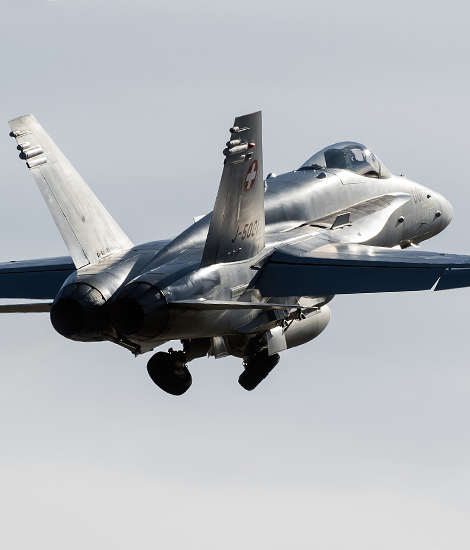
|
Fliegerstaffel 17 "Falcons"; Payerne, March 19, 2013
The Swiss Air Force, Part 3; Text and Photograph’s by Alex van Noye
Fliegerstaffel 17 is one of the two staffels which are part of Fliegergeschwader 11. This unit is stationed at the Swiss airbase Payerne. This air base is located in the west of Switzerland and is the largest air base in the country. Fliegerstaffel 17 is equipped with the American build McDonnell Douglas F/A-18 Hornet.
Fliegerstaffel 17 is one of the three professional units of the Swiss Air Force and is equipped with the McDonnell Douglas F/A-18 Hornet. The unit is stationed at Payerne airbase in western Switzerland. Payerne is currently the largest military airbase of the Swiss Air Force. Fliegerstaffel 17 was founded in 1925 as Jagdfliegerkompanie 17. The unit had at that time 8 aircraft in service of the types Haefeli DH5 and Dewoitine D-27. Both aircraft were at that time modern fighters. Jagdfliegerkompanie 17 flew especially the D-27. The aircraft was used by the unit from 1925 to 1939. The D-27 was replaced in 1939 by the C35. The C35 was the last biplane which would fly in Swiss service. The airports where the unit was stationed in this period, were; Alpnach, Spreitenbach, Weinfelden and Kloten Ruemlang. In October 1942, Jagdfliegerkom- panie 17 starts the conversion to the C-3603 at Stans airbase. The C-3603 was the first monoplane in service of the Swiss Air Force. The unit was initially equipped with only three aircraft of this type. As of 1945, the C-35 was withdrawn from use and the unit switched completely to the C-3603. In the meanwhile, the unit was stationed at Raron airport. Jagdfliegerkompanie 17 was integrated into the Air Surveillance Wing in collaboration with Jagdfliegerkompanie 3 during the Second World War. Also this unit flew the same aircraft types compared to Jagdfliegerkompanie 17. The units were linked together until the end of the Second World War.
From 1952, Jagdfliegerkompanie 17 was renamed to Fliegerstaffel 17. This is nowa- days still the name of the unit. The first years after the renumbering the unit still flew graduated with propeller driven aircraft. The aircraft which flew at Fliegerstaffel 17 were the C-3604 and D-3802. From 1955, the unit switched to the DH-112 Venom. The unit operated from Buochs airbase and Emmen airbase. The unit received from January 12, 1963, a badge which made the unit recognizable. The Falcon became the symbol of Fliegerstaffel 17. The image of the falcon would now be displayed on the
|
|
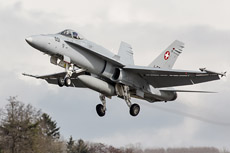
|
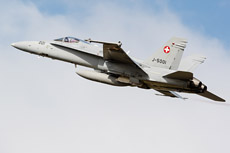
|
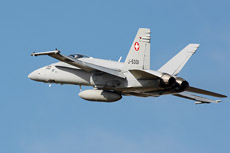
|
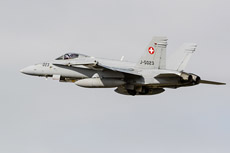
|
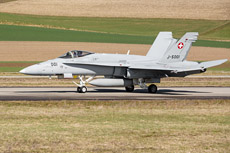
|
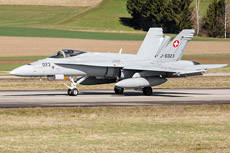
|
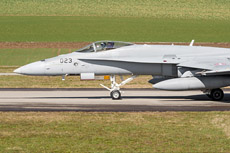
|
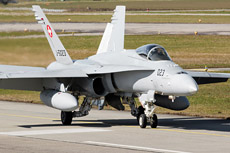
|
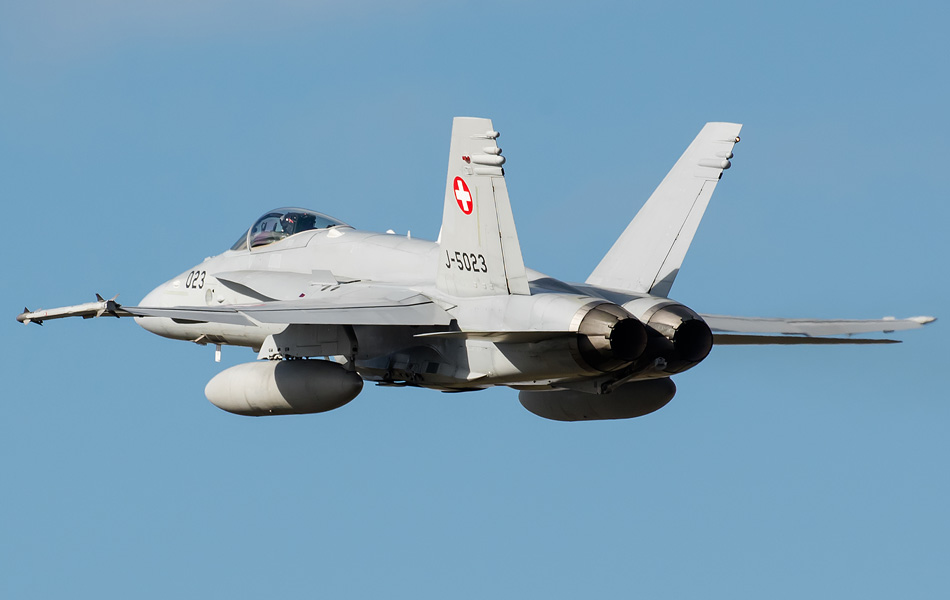
|
aircraft. Also the Falknerei was established on the same day as a part of Fliegerstaffel 17. The Falknerei was an exclusive club where pilots and former pilots of the unit came together to socialize. Members of the unit became automatically a member of this club when they joined the squadron. The purpose of the Falknerei was to strengthen the team spirit outside the working hours. From 1967, the unit would become operational with a modern fighter aircraft. The French Dassault Mirage III was introduced at the Swiss Air Force. Fliegerstaffel 17 started to use these aircraft in the same year and the unit moved to Payerne. This aircraft had a much bigger performance compared to the outdated Venom which was in use until now. The Mirage III was the first jet of the Swiss Air Force which could break the sound barrier easily. Fliegerstaffel 17 gained a lot of experience about tactics and methods on the Mirage III in the following years. A versatile aircraft like the Mirage III was unprecedented in Switzerland and required extensive training of the pilots.
Fliegerstaffel 17 was in September 1995 the first unit which would switch to the McDonnell Douglas F/A-18 Hornet after it flew for 28 years with the Mirage III. The first pilot went to the United States to undergo the conversion to the F/A-18. The exchange pilot was integrated with the RAG squadron of the United States Navy. After his training with the U.S. Navy, this pilot became an instructor at the F/A-18 in Florida. The pilot had also the opportunity to qualify himself for the landing on a U.S. aircraft carrier. It was soon clear only the professional pilots made enough flight hours a year to fly an advanced system like the F/A-18 Hornet. Only the three professional units of the Swiss Air Force were therefore equipped with the F/A-18 Hornet. Since 1997, the F/A-18 Hornet was declared operational at the Swiss Air Force. Fliegerstaffel 17 was the first operational unit which was flying the Hornet. The F/A-18 Hornet is a modern fighter of the fourth generation and is used as an all-round fighter. The primary task of the F/A-18 is defending the Swiss airspace. The F/A-18 is a strong aircraft which quickly can climb to big heights after take-off. This has big advantages, because Switzerland is a very mountainous country and aircraft operate mainly at high altitudes. The arrival of the Hornet made the Swiss Air Force capable to react much faster to unidentified aircraft flying within Swiss airspace.
Today, Fliegerstaffel 17 trains the daily various aspects of modern warfare. The cur- rent air defense task has become a complex task, because there are daily more and more planes in the sky above the relatively small country. The pilots of Fliegerstaffel 17 train these aspects daily. Night flights are usually trained on Mondays. Tuesday is at Payerne a reserve day for night flights when Monday’s night mission was cancelled due to bad weather. The night flights take only place in the dark season of the year from early October to late March. The Swiss airspace is small and is divided into two areas of operation. Because of the small country, it is difficult to train with Beyond Visual Range (BVR) weapons. Switzerland is also densely populated without any borders or vast oceans for training exercises. For that reason Fliegerstaffel 17 trains regularly outside Switzerland in countries such as Great Britain, Germany and France. In the past, the F/A-18s of Fliegerstaffel 17 participated in exercises such as Nomad in England and Elite in Germany. During these exercises, the pilots of Fliegerstaffel 17 can still train with weapons which cannot be used in Switzerland. During these exercises, the low-flying can extensively be trained. In addition to the operational tasks, the F/A-18 Hornet Display Team is a part of Fliegerstaffel 17. This team will perform its display at several annual air shows and demonstrations and shows what the Swiss Air Force does in its daily life. Fliegerstaffel 17 is a modern Swiss unit and will stay operational with the F/A-18 Hornet at Payerne airbase in the coming years.
|
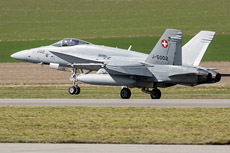
|
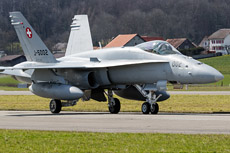
|
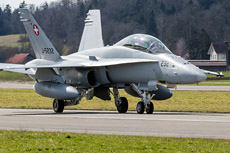
|
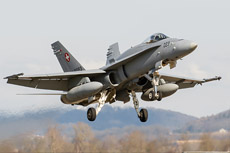
|
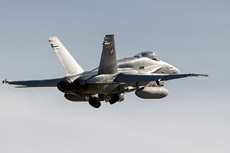
|
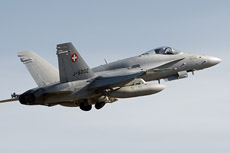
|
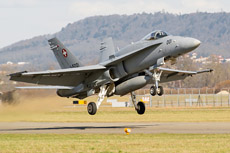
|
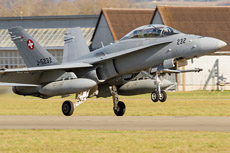
|
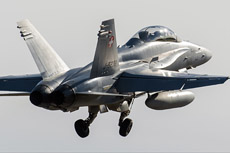
|
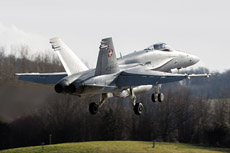
|
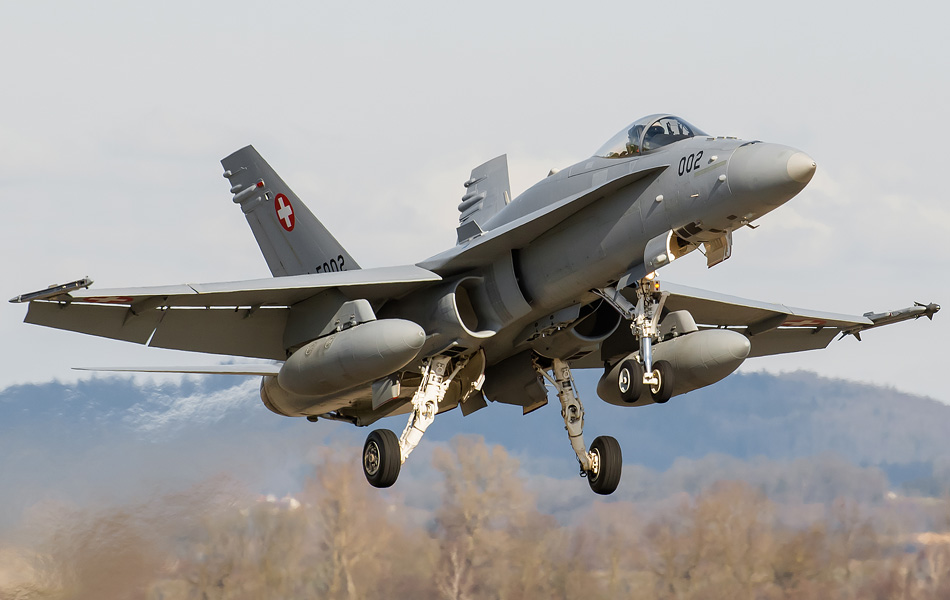
|
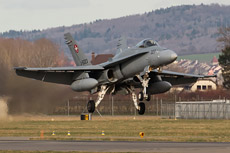
|
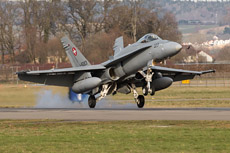
|
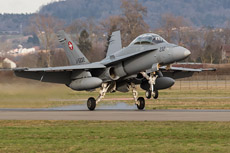
|
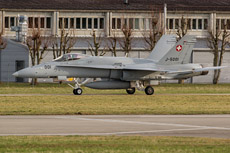
|
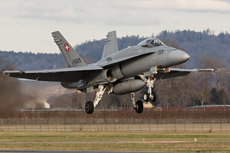
|
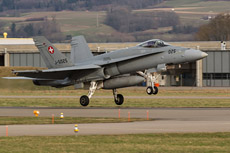
|
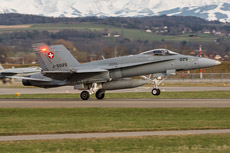
|
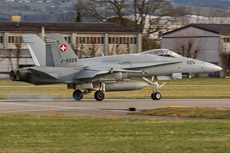
|
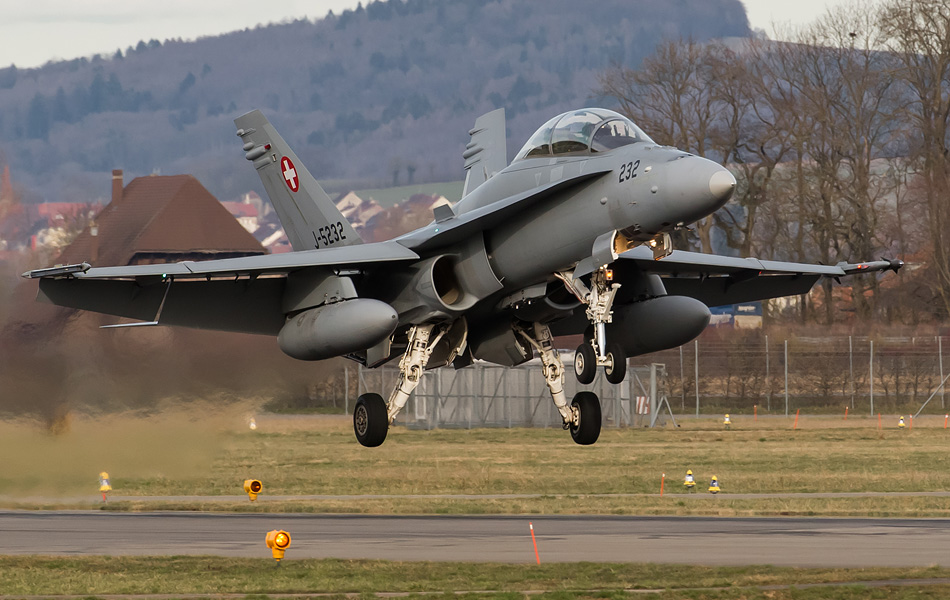
|
|
|

|







